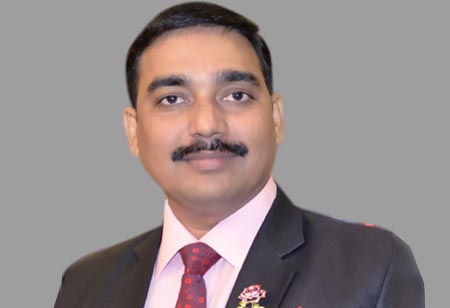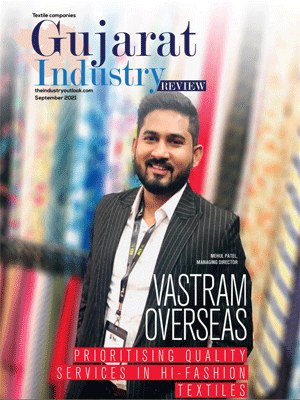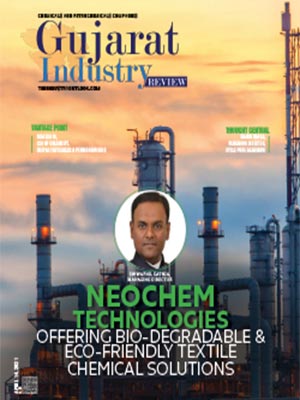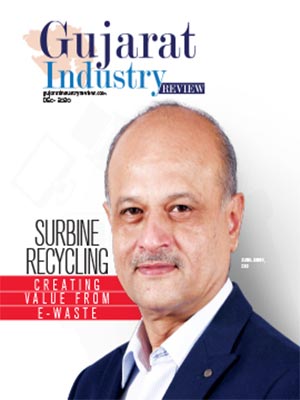Innovation is the Need of the Hour for Plumbing Industry in India
GJ Industry Review Team
Anup Tripathi, General Manager, Sloan India, in an interaction with Sudhakar Singh, Editor, Industry Outlook, shares his views on the challenges faced by the plumbing industry and how it needs to gear up for technological innovation.
What are the major challenges impeding the growth of the plumbing industry in terms of innovative measures and technology adoptions?
The immediate challenge is obviously COVID-19. Another challenge is innovation. There has not been much innovation in this industry for a long time, especially in India where people are just following the global trends. As need is the mother of invention, there is a requirement for innovative products not only from the water conservation perspective but also for the complete well-being of the user.
In every industry, we are seeing a move towards automation and smart technology is being adopted. How do you see the adoption of smart technology in the plumbing industry?
Modern technology has impacted the structure of businesses as well as the manner in which they operate. Many who want to remain competitive need to stay ahead of the science and stay up to date with the latest tools and technology. Green products that are in high demand and in today's scenario, low flow toilets and faucets which conserve more water are in high demand in in commercial as well as residential buildings.
Apart from water conservation, people also talk about the life cycle of the product. There is a concept called EPD (Environment Product Declaration) and HPD (Health Product Declaration). Now consultants are talking about it. It is about assessing the overall impact of the lifecycle of your product on the environment and on the human health. From the procurement of raw material to the production process, to the usage of the product and when the life comes to an end, how you are going to dispose it. The users, the consultants, architects are looking at it from this perspective. So, the technology, water conservation and the ‘greenability’ of a product is something which needs to be looked at.
What are the major expectations of commercial customers from plumbing solution providers? How are those expectations changing in the current times?
For the commercial customer, the major requirement is performance. A product being used at high traffic area like airport must be robust and should be able to handle huge traffic. So, performance is one criteria and maintenance free operation for a long time is the other major requirement of commercial customers. In today’s scenario, touch-free is another requirement which has been added now.
People do not want to touch any plumbing equipment in a commercial toilet. So, touch-free has come up in a very big way.
If we compare the technology adoption in India market with other countries, how do you see the technology maturity in India?
India is a very tech savvy country if I say in totality, but if you look at plumbing, we are far behind the global standards. Although technology is getting matured in India, the problem is that there is no innovation. Most of the technologies are being directly adopted.
Another unfortunate thing from the plumbing perspective is that there is no mandatory plumbing code in the country. Only Mumbai is a city in the country where there is a sanitary department in the local body. There is a unified plumbing code in India, but that is just advisory.
Moreover, it is not just about the usage of fresh water but also the used water which is disposed to the main drain. That is also a challenge. Most of the sanitation systems in the cities are 50 years old. So, they are not able to perform properly. Hence, innovation is not only required at the user end, but also in terms of how the waste is carried in the pipeline. Many times we hear cases of breakage in the pipeline resulting in mixing of fresh water and sanitation water. These are the areas that need innovation.
Making use of grey water is a great way of water conservation. Almost 30 percent of the total consumed water can be reused in the restroom. There is a great scope for water conservation if you use the right instrument of flushing in the toilet. So, I think this area should be looked at and the companies in the industry should provide the right solution to reclaim the used water.
Speaking of the reuse of grey water, what kind of new plumbing systems is your company working on to enable the effective use of grey water?
Sloan is a company which started designing specific products for reclaimed water decades ago. We have started our operation in India four years ago and we have products for enabling the use of reclaimed water. And interestingly almost 40 percent of the water used in toilet is used in flushing. So, we have specific flush valves which work on the reclaimed water. Probably, Sloan is the only company which certifies its flush valve to be used for reclaimed water. We have given purple color code to that. So, we have a specific product with purple color code which indicates that it is being used with reclaimed water. And these products are certified with 250,000 cycles which they can perform without maintenance. So, we have addressed reclaimed water in a great way not only in India but internationally and have contributed to water conservation to the tune of millions of gallons at many huge installations.
Detection of leakages is another challenge for the plumbing industry. How is the industry addressing this challenge?
Leakage is an important area. A drop by drop leakage of water can amount to wastage of at least 60 litres of water every hour. Faulty flush valve can also cause wastage due to leaking water. Sloan has introduced the specific product for India called TruFlush Flushometer which was developed for Indian water conditions. Another area which should be looked at is urinal. We spend a lot of water in urinal. We have developed a product called Hybrid Urinal. In every 72 hours, it dispenses four litres of water to clean the inside, the water system and the drainage system so that there is no deposit and clogging and the system can work for a long time.
Where do you see the plumbing industry in the near future?
Touch-free products are going to be used extensively, especially in commercial restrooms. Sensor based products are the right solution in any commercial environment and the usage has increased in the past couple of months. Although the pandemic has caused almost all major industries to evaluate how they operate, the construction industry in particular has got a unique opportunity to reform and innovate.




